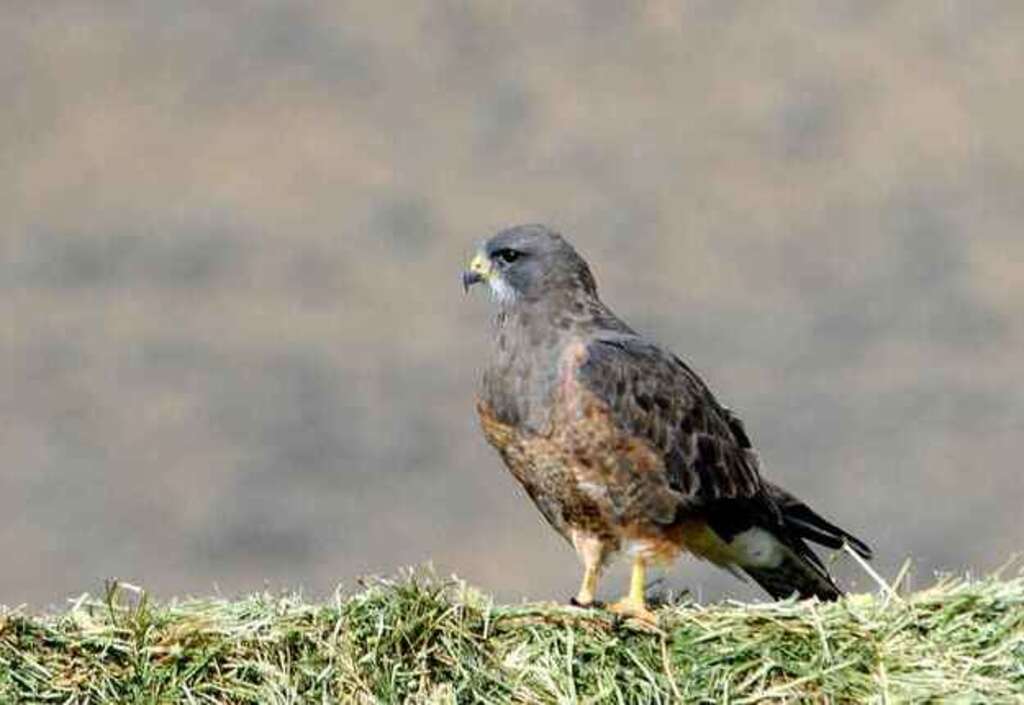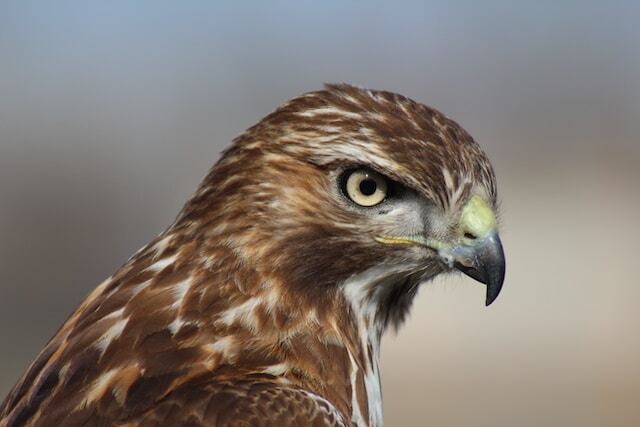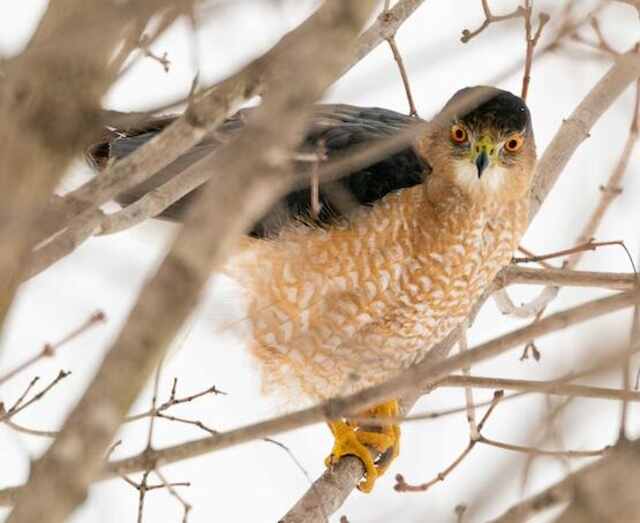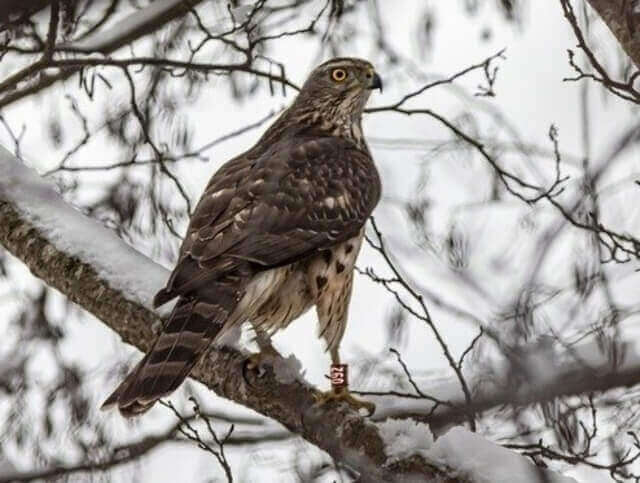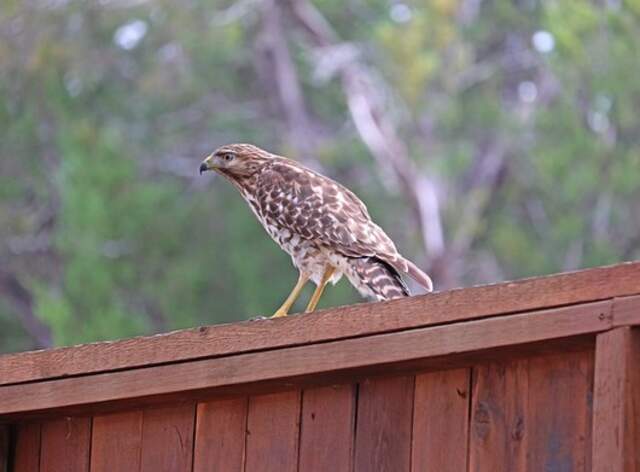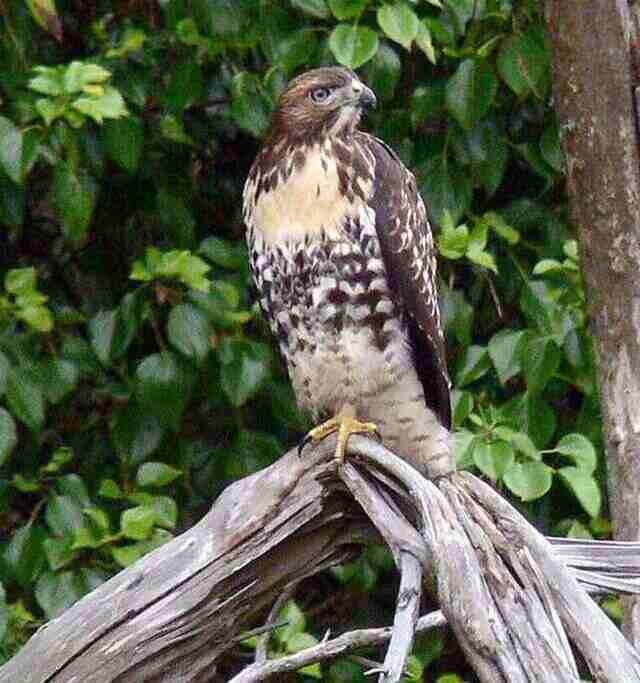What Hawks Are In Florida? Get ready for a wild ride through Florida’s untamed wilderness, where hawks rule the skies with grace and prowess!
From the majestic Red-shouldered Hawk to the nimble Sharp-shinned Hawk, these avian marvels are the stars of the Sunshine State’s vibrant ecosystems.
In this captivating article, we’ll unravel the secrets of Florida’s hawk species, showcasing their unique features, impressive hunting skills, and their crucial role in maintaining the delicate balance of nature.
Prepare to soar alongside these magnificent creatures as we uncover their captivating stories and celebrate their vital contributions to the thriving Florida ecosystem.
Table of Contents
- 1 Key Takeaways
- 2 What Hawks Are In Florida?
- 3 The Red-shouldered Hawk
- 4 The Cooper’s Hawk
- 5 The Sharp-shinned Hawk
- 6 The Red-tailed Hawk
- 7 The Swainson’s Hawk
- 8 The Northern Harrier
- 9 The Osprey
- 10 The Snail Kite
- 11 Frequently Asked Questions
- 11.1 What is the habitat range of these hawks in Florida?
- 11.2 What is the diet of these hawks, and how do they hunt?
- 11.3 How many subspecies of each hawk are found in Florida?
- 11.4 What is the breeding behavior of these hawks in Florida?
- 11.5 What are the conservation efforts being taken to protect these hawks in Florida?
- 12 Conclusion
- 13 Author
Key Takeaways
- Florida is home to several hawk species, including the Red-shouldered Hawk, Cooper’s Hawk, Sharp-shinned Hawk, Red-tailed Hawk, Swainson’s Hawk, and Northern Harrier.
- Hawks have remarkable characteristics such as keen eyesight, sharp talons, and powerful wings that enable them to hunt and capture their prey with precision and skill.
- Hawks play a crucial role in maintaining the balance of nature by controlling the populations of smaller animals and birds.
- Habitat loss due to development and logging still poses a threat to some hawk species in Florida.
What Hawks Are In Florida?
In Florida, various hawk species grace the skies. Common ones include Red-shouldered, Cooper’s, and Sharp-shinned Hawks.
Additionally, you may encounter Swallow-tailed, Red-tailed, and Broad-winged Hawks. Their diverse presence adds charm to Florida’s wildlife, making it a haven for hawk enthusiasts and nature lovers alike.
The Red-shouldered Hawk
The Red-shouldered Hawk is a common resident bird of prey in Florida, known for its distinctive reddish-brown shoulders and its preference for forested habitats.
This hawk is known to breed in Florida, with breeding pairs setting up their territories in forested areas near water sources.
The population trend of the Red-shouldered Hawk in Florida has been stable over the past few decades, thanks in part to conservation efforts to protect its forest habitat.
However, habitat loss due to development and logging still poses a threat to this species.
The next hawk species found in Florida is the Cooper’s Hawk, which is similar in appearance to the Red-shouldered Hawk but has different breeding habits and population trends.
The Cooper’s Hawk
A medium-sized bird of prey commonly found in southern parts of the United States, the Cooper’s Hawk is known for its sleek and agile body, which allows it to hunt with impressive precision and speed.
These hawks are known to be opportunistic predators, preying on a variety of small to medium-sized birds and mammals.
They are also skilled at navigating through dense vegetation, which makes them well-suited for hunting in wooded areas.
The Cooper’s Hawk is typically found in deciduous forests, wooded swamps, and suburban areas. They are known for their aggressive behavior, often chasing prey through dense vegetation and even pursuing them in flight.
In terms of habitat, these hawks prefer large trees for nesting and breeding, and have been known to use man-made structures such as telephone poles and buildings as nesting sites.
As we transition to the subsequent section about ‘the sharp-shinned hawk’, it is important to note that the Cooper’s Hawk and the sharp-shinned hawk are often confused due to their similar appearance, but they have distinct differences in behavior and habitat preferences.
The Sharp-shinned Hawk
Admired for its impressive hunting abilities, the Sharp-shinned Hawk is a small bird of prey that is commonly found in wooded areas throughout North America. This hawk is a master of stealth and agility, making it a formidable hunter.
Here are some identification tips to help distinguish the Sharp-shinned Hawk from other hawks:
1) Look for the small size and short wingspan of this hawk.
2) Notice the long, thin legs and narrow body shape.
3) Look for the distinct, square-tipped tail.
4) Observe the dark cap and nape contrasting with a lighter face and underparts.
5) Watch for the quick, darting flight pattern, often with sudden stops and turns.
The Sharp-shinned Hawk is a migratory bird that breeds in the northern parts of North America and winters in the southern parts.
During migration, these hawks can be seen flying in large groups, known as kettles. As they soar through the sky, they use thermal currents to gain altitude and conserve energy.
Now, let’s transition to the next subtopic: the red-tailed hawk.
The Red-tailed Hawk
One particular species of bird of prey is known for its distinctive rust-colored tail feathers. The Red-tailed Hawk is a common sight in Florida, and can be found in a variety of habitats, including forests, grasslands, and deserts.
These hawks are known for their behavior of soaring high above their prey before swooping down to catch it with their sharp talons.
Red-tailed Hawks prefer to nest in tall trees or on cliffs, and can often be seen perched on telephone poles or other high structures.
They are opportunistic hunters and will eat a variety of prey, including rodents, rabbits, and snakes. The Red-tailed Hawk is a powerful and majestic bird, and a symbol of freedom and strength.
As we move on to the next section about the Swainson’s Hawk, we will see how this bird compares to the Red-tailed Hawk in terms of behavior and habitat preferences.
The Swainson’s Hawk
The Swainson’s Hawk, also known as the grasshopper hawk, is a migratory bird of prey that is commonly found in North and South America.
Identification features of this hawk include a dark brown back, white chest, and a dark band across the belly. The head is light-colored with a dark eye stripe, and the wings are long and pointed.
This hawk is known for its impressive migration patterns, flying up to 14,000 miles round trip from its breeding grounds in North America to its wintering grounds in South America.
During migration, Swainson’s Hawks can be seen in large flocks, soaring high in the sky on thermals. Their diet consists mainly of small mammals, birds, and reptiles.
With its impressive wingspan and graceful flight, the Swainson’s Hawk is a fascinating bird to observe.
Moving on to the next topic, the northern harrier is another bird of prey that can be found in Florida.
The Northern Harrier
The Northern Harrier is a medium-sized hawk that can be identified by its distinctive white rump patch. Their habitat ranges from open fields to marshes and wetlands across North America, Europe, and Asia.
They are known for their unique hunting behavior, flying low over the ground searching for prey such as small mammals and birds.
Appearance and Identification
To accurately identify hawks in Florida, it is essential to observe their distinct physical features such as their size, coloration, and unique patterns of feather markings, as well as their behavior and habitat preferences.
One common hawk species found in Florida is the Northern Harrier, which can be identified by its slim body, long tail, and distinct white rump patch.
Male Northern Harriers have a blue-gray back and wings, while females and juveniles have a brownish-red coloration.
Another key feature is their behavior of flying low over open fields and marshes, using their keen sense of hearing to locate prey.
By using identification techniques such as these, it becomes easier to distinguish between hawk species and understand their migration patterns.
See the table below for a visual representation of the Northern Harrier’s physical features:
| Feature | Description |
|---|---|
| Size | Slim, medium-sized hawk |
| Coloration | Males: blue-gray back and wings; Females and juveniles: brownish-red |
| Tail | Long and narrow |
| Rump Patch | Distinct white patch on the upper tail feathers |
Moving on to the next section about habitat and range, it is important to note that these factors also play a crucial role in identifying and understanding hawk species.
Habitat and Range
Understanding the habitat and range of various hawk species is essential for accurately identifying and studying them. In Florida, there are multiple habitats where hawks can be found, ranging from coastal areas to inland forests.
For example, the red-shouldered hawk is commonly found in wooded areas near water sources, while the osprey prefers coastal habitats near bodies of water.
Additionally, Florida’s diverse habitats provide bird watching opportunities for those interested in observing hawks in their natural environments.
By understanding the range and habitat preferences of different hawk species, bird watchers can increase their chances of spotting these magnificent birds in the wild.
Moving on to the next section about diet and behavior, it is important to note that a hawk’s habitat and range can greatly influence their feeding habits and hunting techniques.
Diet and Behavior
One fascinating fact about the dietary habits and behavior of various hawk species is that they can consume up to three times their body weight in food per day.
Hawks are highly skilled predators, with a varied diet that includes small mammals, birds, reptiles, and even insects.
Some species, such as the Cooper’s hawk and the sharp-shinned hawk, prefer to hunt smaller birds, while others, like the red-tailed hawk and the red-shouldered hawk, tend to prey on rodents and other small mammals.
Hawks are known for their exceptional eyesight, which allows them to spot prey from great distances. They also have sharp talons and beaks, which they use to capture and kill their prey.
In terms of behavior, hawks are generally solitary creatures, with the exception of breeding season. During the fall, many hawks migrate to warmer areas, including Florida, where they can find ample food sources.
Understanding the prey preferences and behavior of hawks is essential for conservation efforts and for maintaining healthy ecosystems. Speaking of raptors, let’s move on to the next section about the osprey.
The Osprey
The Osprey, also known as the fish hawk, can often be seen hovering over bodies of water in Florida, scanning for its next meal. This bird of prey is well adapted to its aquatic habitat range, with its unique physical features and hunting strategies.
Ospreys have a wingspan of up to six feet and sharp talons that allow them to dive into the water and grab fish with ease. They also have a reversible outer toe that helps them hold onto their slippery prey.
Osprey behavior is characterized by their incredible hunting abilities and their strong nesting instincts.
They mate for life and build large nests made of sticks and other materials near the water’s edge. These nests can be up to six feet in diameter, and they are used year after year.
Although they are a common sight in Florida, Ospreys face threats from habitat loss, pollution, and other human-related issues.
Despite these challenges, they remain a symbol of freedom and strength in the Sunshine State.
Moving onto the subsequent section about the snail kite, this species is also an important predator in Florida’s ecosystem.
The Snail Kite
An important predator in the wetlands of the southern United States, the snail kite has a unique diet that is essential to the health of its ecosystem.
This species is known for its specialized feeding habits, which involve feeding primarily on apple snails.
These snails are not only an important food source for the snail kite, but they also play a crucial role in maintaining the wetland ecosystem.
Unfortunately, habitat destruction and water management practices have led to a decline in the snail kite population in Florida.
Conservation efforts have been put in place to protect the snail kite and its habitat.
These efforts include habitat restoration and management, as well as captive breeding programs.
With continued conservation efforts, it is hoped that the snail kite population will recover and thrive in its wetland habitat.
Frequently Asked Questions
What is the habitat range of these hawks in Florida?
Florida’s hawk habitat range varies from coastal marshes to pine forests, with some species venturing into urban areas. Migration patterns also play a role, with hawks moving to and from Florida during winter and breeding seasons. A fascinating and complex ecosystem.
What is the diet of these hawks, and how do they hunt?
Hawks in Florida employ diverse hunting techniques, including soaring and stooping, to catch a range of prey, such as snakes, rodents, and birds. Their prey preferences vary based on species and habitat, and may even include insects and fish.
How many subspecies of each hawk are found in Florida?
Florida is home to various subspecies of hawks, including the Cooper’s hawk and the red-shouldered hawk. The hawk population and geographic distribution vary depending on factors such as habitat and prey availability.
What is the breeding behavior of these hawks in Florida?
Hawks in Florida exhibit territorial aggression during breeding season and engage in mate selection. These behaviors are important for successful reproduction and maintaining genetic diversity. Understanding these behaviors can aid in conservation efforts for these birds of prey.
What are the conservation efforts being taken to protect these hawks in Florida?
Protected territories and community involvement are key to the conservation efforts being taken to protect hawks in Florida. Through scientific research and education initiatives, these efforts promote the preservation of these majestic birds and their habitats.
Conclusion
Florida is home to a diverse range of hawks, each with their unique characteristics and behaviors. The Red-shouldered Hawk is a common sight in Florida’s wetland areas, where it can be seen hunting for fish and amphibians.
The Cooper’s Hawk and Sharp-shinned Hawk are both smaller species that are known for their agility and speed. They are often seen darting through trees and shrubs in search of prey.
The Red-tailed Hawk is a large and powerful bird that is often spotted soaring over open fields and grasslands.
The Swainson’s Hawk is another large species that can be seen during migration periods. The Northern Harrier is a unique hawk that is often seen hovering over fields, looking for small mammals to prey upon.
The Osprey is a coastal species that is known for its impressive fishing skills, while the Snail Kite is a specialist that feeds almost exclusively on apple snails.
In conclusion, Florida is a haven for hawks, with a wide range of species that call the state home.
These majestic birds are a vital part of Florida’s ecosystem and play an important role in controlling rodent populations and maintaining the balance of nature.
While their presence may sometimes be intimidating, it is important to appreciate and respect these magnificent creatures for their unique and valuable contributions to the world around us.

